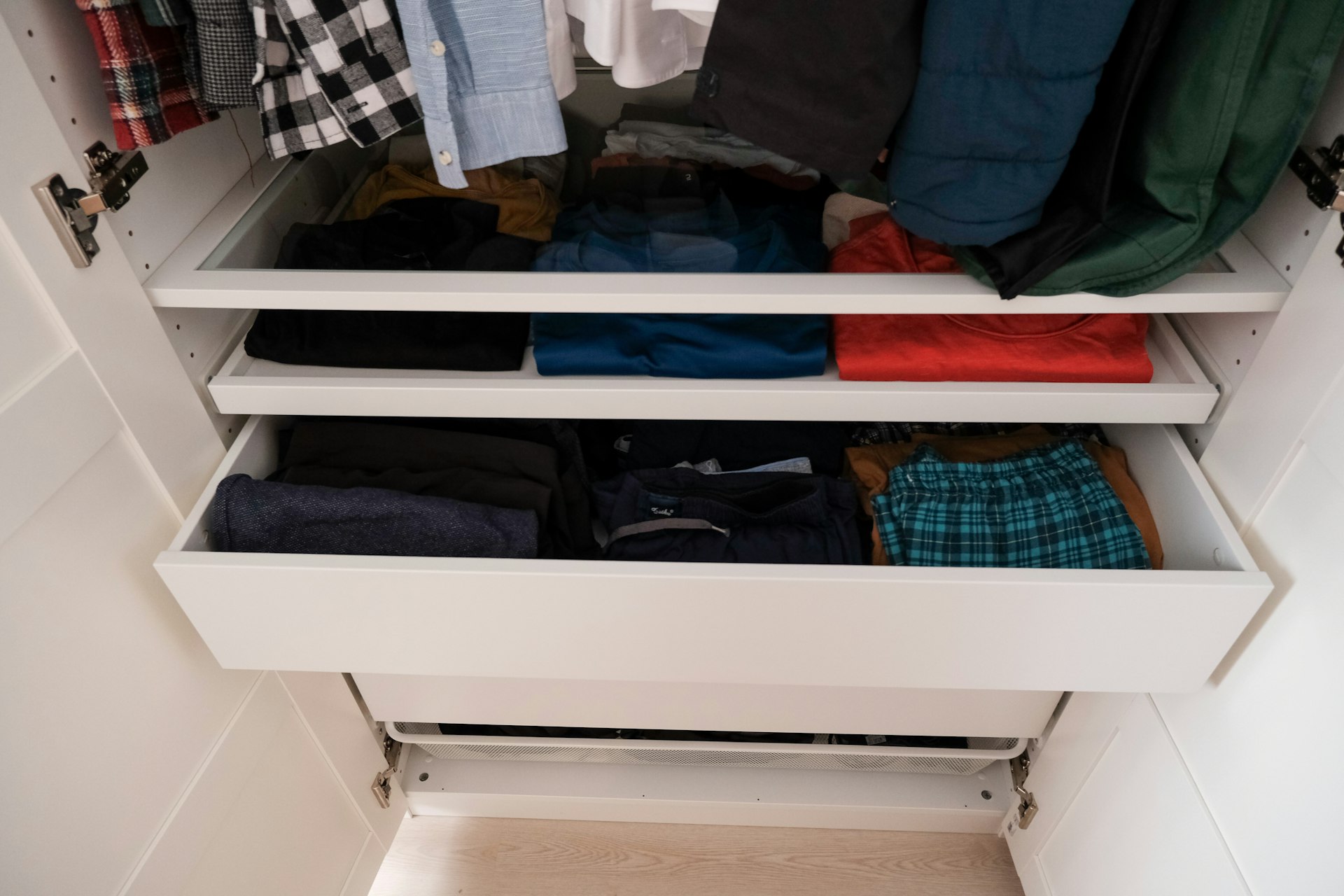Het selecteren van het ideale materiaal voor uw meubels of woningdecoratieproject leidt vaak tot een keuze tussen melamine en laminaat, twee veelvoorkomende opties die bekend staan om hun duurzaamheid, kosteneffectiviteit en esthetische aantrekkingskracht. Hoewel deze materialen bepaalde kwaliteiten delen, bezitten ze ook onderscheidende kenmerken. Dit artikel probeert de verschillen tussen melamine en laminaat te belichten om u te helpen weloverwogen beslissingen te nemen.
Melamine: een synthetisch wonder
Melamine is een technisch materiaal dat is gemaakt door melaminehars te combineren met formaldehyde, wat resulteert in een thermohardende kunststof die uitzonderlijke sterkte, duurzaamheid en weerstand tegen krassen, hitte en vocht biedt. Dit materiaal wordt veel gebruikt bij het maken van keukenkastjes, aanrechtbladen, planken en verschillende soorten meubels, vanwege het vermogen om dagelijkse slijtage te weerstaan.
Een van de meest aantrekkelijke kenmerken van melamine is de grote verscheidenheid aan kleuren, patronen en afwerkingen. Met geavanceerde printtechnologie kan melamine het uiterlijk van natuurlijke materialen zoals houtnerf, steen of andere texturen nauwkeurig nabootsen, wat een veelzijdige optie biedt voor diverse ontwerpstijlen. Deze flexibiliteit stelt ontwerpers en fabrikanten in staat om de gewenste esthetiek te bereiken zonder in te leveren op duurzaamheid of functionaliteit.
Laminaat: een fusie van lagen
Laminaat is een ander synthetisch materiaal dat bekend staat om zijn duurzaamheid en veelzijdigheid. Het wordt gemaakt door meerdere lagen papier of stof te verbinden met hars onder hoge druk en hitte, waardoor een sterk, slijtvast oppervlak ontstaat dat bestand is tegen krassen, vlekken en hitte. Laminaat wordt veel gebruikt voor aanrechtbladen, vloeren, wandpanelen en meubels, waardoor het een populaire keuze is voor zowel residentiële als commerciële toepassingen.
Net als melamine biedt laminaat een uitgebreid palet aan kleuren, patronen en afwerkingen. Het kan op kunstzinnige wijze de look van hout, steen en andere natuurlijke materialen nabootsen, waardoor het een veelzijdige keuze is voor uiteenlopende ontwerpvoorkeuren.
Een speciaal type laminaat is compact laminaat. Ontdek alles over compact laminaat in een van onze andere artikelen ..
Melamine onderscheiden van laminaat
Melamine en laminaat vertonen bepaalde overeenkomsten, maar verschillen op een aantal belangrijke punten. Deze verschillen hebben invloed op het gebruik, de prestaties en de kosten.
Samenstelling
Het belangrijkste verschil tussen melamine en laminaat ligt in de samenstelling en het productieproces.
- Melamine : Melamine wordt gemaakt van een combinatie van melaminehars en formaldehyde, een soort thermohardende kunststof. De melaminehars begint als een wit kristallijn poeder dat wordt opgelost in water en gecombineerd met formaldehyde. Dit mengsel wordt vervolgens verhit en op een substraat geperst, meestal spaanplaat of medium-density fiberboard (MDF), om een sterk, duurzaam materiaal te creëren. Het resulterende oppervlak kan worden versierd met een grote verscheidenheid aan kleuren en patronen, waardoor het geschikt is voor veel ontwerptoepassingen.
- Laminaat : Laminaat bestaat uit verschillende lagen papier of stof die geïmpregneerd zijn met hars en vervolgens onder hoge druk en hitte aan elkaar worden gehecht. De bovenste laag is meestal een bedrukte of decoratieve laag die verschillende texturen, kleuren en patronen kan nabootsen. Onder de decoratieve laag worden verschillende lagen kraftpapier geïmpregneerd met fenolhars, wat het laminaat zijn sterkte en duurzaamheid geeft. De basislagen worden vervolgens onder hoge hitte en druk aan elkaar gesmolten, waardoor een dicht, hard oppervlak ontstaat dat bestand is tegen krassen, vlekken en hitte.
Dit verschil in samenstelling resulteert in verschillende prestatiekenmerken. Melamine is bijvoorbeeld harder en brozer en daardoor gevoeliger voor afbrokkelen of barsten bij zware impact. Daarentegen biedt de gelaagde constructie van laminaat meer flexibiliteit en duurzaamheid, waardoor het minder vatbaar is voor schade door impact.
Duurzaamheid
Melamine en laminaat staan beide bekend om hun duurzaamheid, maar er zijn kleine verschillen in hun prestaties.
- Melamine : Hoewel melamine zeer goed bestand is tegen krassen, vocht en vlekken, kan de hardheid ervan een nadeel zijn. Het kan afbrokkelen of barsten bij blootstelling aan aanzienlijke impact of druk. Bovendien is melamine minder hittebestendig dan laminaat en blootstelling aan hete voorwerpen kan brandplekken op het oppervlak achterlaten. Ondanks deze beperkingen blijft melamine een sterk, kosteneffectief materiaal voor toepassingen waarbij zware impact of hoge hitte geen primaire zorg is.
- Laminaat : Laminaat, met zijn gelaagde constructie, staat bekend om zijn flexibiliteit en sterkte. Het is beter bestand tegen afbrokkelen en barsten dan melamine en biedt superieure hittebestendigheid, waardoor het een betere keuze is voor gebieden waar vaak warme voorwerpen worden geplaatst, zoals aanrechtbladen in de keuken. Laminaat is ook bestand tegen vervaging, vlekken en vocht, waardoor het ideaal is voor gebieden met veel verkeer of omgevingen die gevoelig zijn voor morsen en spatten. Het is echter essentieel om te overwegen dat de duurzaamheid van beide materialen afhankelijk kan zijn van factoren zoals de kwaliteit en dikte van het materiaal. Hoogwaardig laminaat zal doorgaans beter presteren dan melamine van lagere kwaliteit.
Kosten
Zowel melamine als laminaat vormen een budgetvriendelijk alternatief voor natuurlijke materialen zoals hout, steen of metaal. De kosten kunnen echter verschillen, afhankelijk van het productieproces en het beoogde gebruik.
- Melamine : Melamine is over het algemeen betaalbaarder dan laminaat vanwege het eenvoudigere productieproces. Het omvat het impregneren van een enkel vel papier of stof met hars, dat vervolgens wordt verbonden met een kern van spaanplaat of medium-density fiberboard (MDF) Dit eenvoudige proces resulteert in lagere productiekosten, waardoor melamine een economische keuze is voor projecten waarbij budgetbeperkingen een belangrijke overweging zijn.
- Laminaat : Laminaat is doorgaans iets duurder dan melamine, voornamelijk vanwege het complexere productieproces en de mogelijkheid tot maatwerk. Het proces omvat het binden van meerdere lagen papier of stof met hars onder hoge druk en hitte, en de bovenste laag kan worden aangepast met decoratieve ontwerpen of patronen. De toegevoegde complexiteit en maatwerkopties dragen bij aan de hogere kosten van laminaat, met name voor hoogwaardige of gespecialiseerde afwerkingen.
Verschijning
Zowel melamine als laminaat zijn populair vanwege hun vermogen om de uitstraling van natuurlijke materialen na te bootsen. Er zijn echter verschillen in hun uiterlijk en esthetische potentieel.
- Melamine : Melamine biedt een breed scala aan kleuren, patronen en afwerkingen, waardoor het gemakkelijk is om een stijl te vinden die bij uw interieur past. De oppervlaktetextuur kan natuurlijke materialen zoals houtnerf of steen nabootsen, wat diepte en dimensie toevoegt aan het eindproduct. Melamine kan worden afgewerkt in glanzende of matte opties, wat flexibiliteit in ontwerp mogelijk maakt. Het uiterlijk van melamine kan echter minder overtuigend zijn dan laminaat wanneer u hoogwaardige natuurlijke materialen probeert te imiteren, omdat het een vlakkere of meer uniforme uitstraling kan hebben.
- Laminaat : Laminaat tilt veelzijdigheid naar een nieuw niveau en biedt een nog breder scala aan kleuren, patronen, afwerkingen en texturen dan melamine. Dankzij de hoge-resolutie printtechnologie kan laminaat het uiterlijk van natuurlijke materialen met opmerkelijke nauwkeurigheid nabootsen, waardoor een opvallende gelijkenis ontstaat met echt hout, steen of andere texturen. Laminaat biedt de optie voor glanzende of matte afwerkingen, evenals gestructureerde oppervlakken die het gevoel van natuurlijke materialen nabootsen. De kwaliteit van het materiaal speelt een cruciale rol bij het bepalen van het realisme van het uiterlijk, waarbij laminaat van hoge kwaliteit een overtuigender en luxueuzer uiterlijk biedt.
Onderhoud
Zowel melamine als laminaat zijn onderhoudsarme materialen die minimale inspanning vereisen om schoon te houden en er op hun best uit te laten zien. Er zijn echter kleine verschillen in hun verzorgingsvereisten.
- Melamine : Melamine is relatief eenvoudig schoon te maken en te onderhouden, waardoor het een populaire keuze is voor meubels en woningdecoratie. Een simpele veeg met een vochtige doek en een mild schoonmaakmiddel is meestal voldoende om vuil of aanslag te verwijderen. Het is belangrijk om het gebruik van agressieve schoonmaakchemicaliën, schuursponsjes of staalwol te vermijden, omdat deze het melamine oppervlak kunnen beschadigen en het na verloop van tijd kunnen laten verslechteren. Regelmatig schoonmaken en verzorgen helpt het uiterlijk en de levensduur van melamine te behouden.
- Laminaat : Laminaat is vergelijkbaar onderhoudsarm, maar het gestructureerde oppervlak vereist mogelijk iets meer aandacht dan melamine. Laminaat kan worden gereinigd met een mild reinigingsmiddel en warm water, en schuurmiddelen of staalwol moeten worden vermeden om krassen op het oppervlak te voorkomen. Laminaat kan ook gevoeliger zijn voor vochtgerelateerde schade, dus het is essentieel om het te beschermen tegen langdurige blootstelling aan vochtige omgevingen. Regelmatige onderhoudspraktijken, zoals het afnemen van oppervlakken om vuil en stof te verwijderen, het gebruik van onderzetters of placemats om te beschermen tegen krassen en vlekken, en het vermijden van het plaatsen van hete voorwerpen direct op het oppervlak, kunnen helpen de levensduur te verlengen en het uiterlijk van laminaat te behouden.
Conclusie
Concluderend bieden zowel melamine als laminaat uitstekende opties voor meubels en woningdecoratieprojecten, elk met zijn eigen unieke voor- en nadelen. Melamine is kosteneffectief, eenvoudig schoon te maken en verkrijgbaar in een breed scala aan kleuren en patronen, waardoor het geschikt is voor budgetbewuste projecten en toepassingen met een lage impact. Laminaat biedt daarentegen superieure duurzaamheid, hittebestendigheid en een breder scala aan ontwerpopties, waardoor het ideaal is voor gebieden met veel verkeer of toepassingen waar uiterlijk en prestaties van het grootste belang zijn.
Bij het sourcen van materialen in China of een andere markt, kan het begrijpen van de verschillen tussen melamine en laminaat u helpen om weloverwogen beslissingen te nemen die aansluiten bij de specifieke behoeften, het budget en de esthetische voorkeuren van uw project. Door factoren als samenstelling, duurzaamheid, kosten, uiterlijk, onderhoud en milieu-impact te overwegen, kunt u het juiste materiaal selecteren om de gewenste resultaten voor uw project te bereiken.
Houd er rekening mee dat het, ongeacht of u voor melamine of laminaat kiest, van essentieel belang is om samen te werken met gerenommeerde leveranciers en fabrikanten die hoogwaardige materialen kunnen leveren die voldoen aan uw normen voor veiligheid, prestaties en duurzaamheid.






